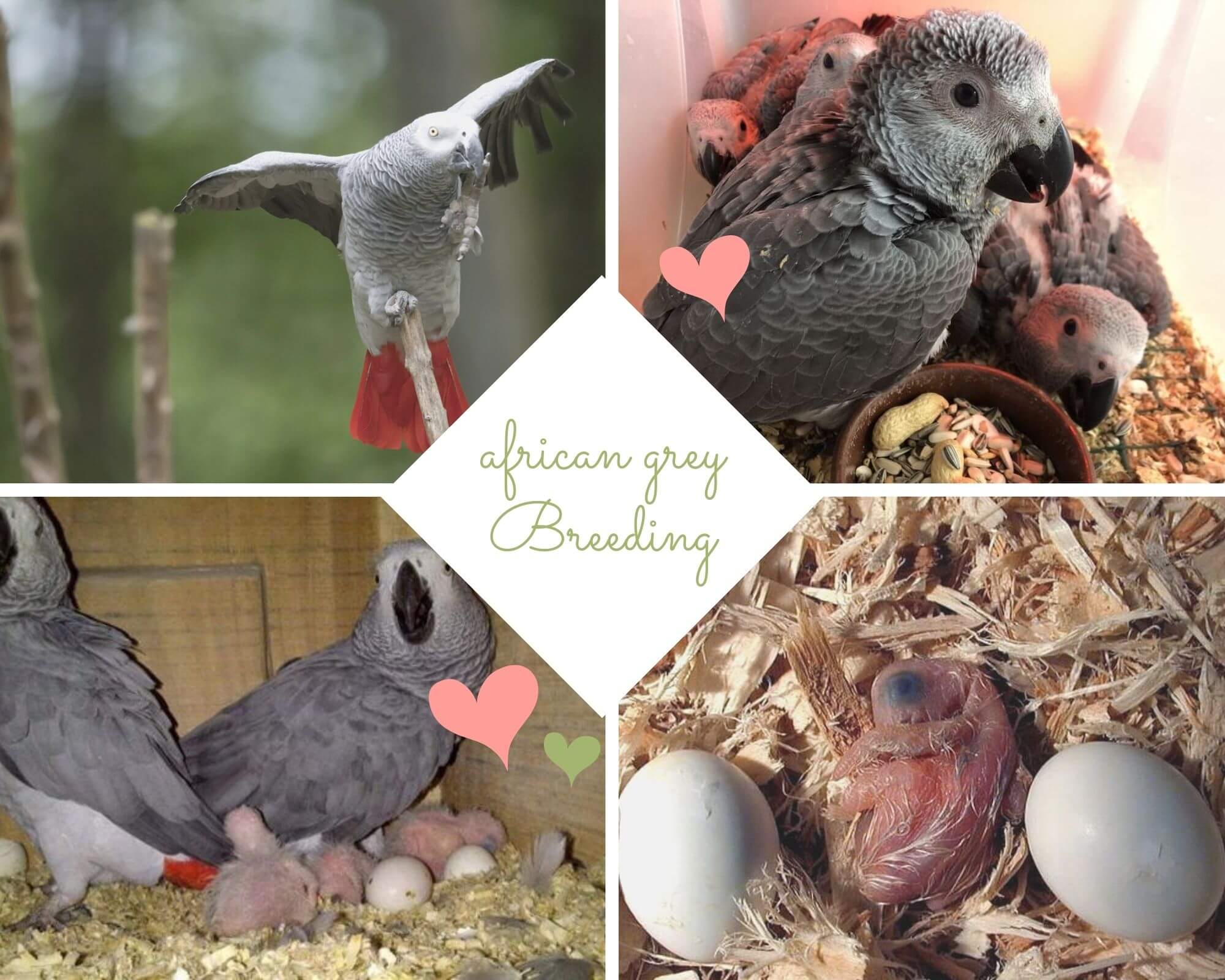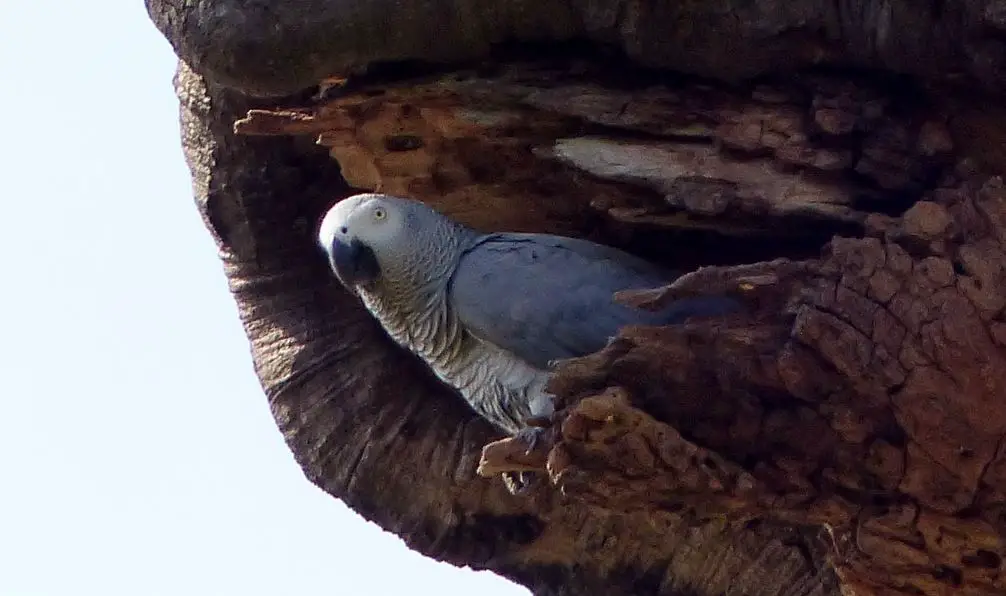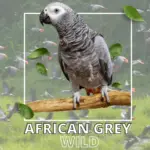
African grey as pet
Once the cavity was chosen, both male and female would come to the cavity and stay for 30 min, and some pairs were seen carrying leaves to the nest. Contact between the partners included grooming, the friction of the beaks, and mutual feeding.
Phenology Pair Formation
One member of the pair would stay outside of the nest and keep making movements up and down with the head, stretching the neck, fanning the tail, and dropping the wings whilst extending and contracting the neck, all these courtship movements were accompanied by whistles.
A Grey Future Captive Breeding of African Grey Parrots of South Africa
SOURCE: Lynette Vermeulen
Nest Building
In Cameroon, both males and females inspected several cavities during the courtship period (March–April), until finding a suitable cavity.
First Brood
In southern Cameroon, most eggs (90.4%) were laid between late April and late May, and nestlings were recorded from late May to early November.
Nest Site
Selection Process: No specific data, however, Piebeng et al reported both members of the pair inspecting cavities.
Microhabitat
Nests in tall living trees. A study in Cameroon reported that nests were mostly in 14 tree species, with the large majority (84%) in Terminalia Superba; other tree species include:
Ceiba pentandra, Alstonia boonei, Crotono ligandrum, Cylicodiscus gabunensis, Distemonanthus benthamianus, Irvingia gabonensis, Klainodosa Gabonese, Petersianthus macrocarpus, Pterocarpus soyauxii, Pycnanthus angolensis, Triplochiton scleroxylon, Uapaca guineensis, and Zanthoxylum heitzii.

African grey Breeding
Site Characteristics
In Cameroon, nests were built-in primary and secondary forests, however, some nests were also found in trees in agricultural or silvicultural systems such as cocoa plantations or seasonal crops.
Construction Process
Gray Parrots are secondary excavators and do not excavate their own nest, instead, they occupy cavities already excavated by woodpeckers or cavities produced by natural agencies (e.g., fallen branches or disease).
Structure and Composition
In Cameroon, nests were characterized by Tamungang et al. The material at the bottom of the nest was a combination of dust and wood chips produced from pecking at the walls of the nest, as well as leaves, feces, and feathers.
However, the study found no evidence of Gray Parrots bringing material to the nest and suggested that leaves were deposited by wind or were brought by species that used the cavity outside the breeding season and that feces and feathers came from parrot chicks.
Dimensions
In Cameroon, the majority of the nests were found in tall trees, ranging from 25 to 45 m high and with circumferences of 184 to 231 cm, with a preference for cavities in the higher part of the tree (65%) and usually on trunks (70%), rather than on secondary branches.
The nest cavities studied were 8–38 m above ground and 85% of nests had round entrance holes; however, there was no preference for cavity depth or internal diameter (mean depth 76 cm; mean internal diameter 33 cm).
Maintenance or Reuse of Nests
In Cameroon, a study by Tamungang et al indicated that Gray Parrots may re-use the nest cavity if habitat loss results in a lack of suitable nests, however, they suggested that more studies should be conducted.
Eggs
Shape: Oval shape.
Size
For P. e. erithacus (n = 38): 36.0–40.6 × 28.5–31.7 mm (mean = 38.6 × 30.2 mm).
For P. e. timneh (n = 1): 37.5 × 32.0 mm.
Mass
For P. e. Erithacus: egg mass 18.7 g; shell mass 1.4 g (range 1.2–1.7).
For P. e. timneh: egg mass 20.6 g; shell mass 1.35 g.
Color and Surface Texture
Eggs are white and slightly glossy.
Clutch Size
In Cameroon, Piebeng et al recorded clutch size as 1–5 eggs; nests with 2 eggs (58.1%) and 3 eggs (31.6%) were more frequent.
Egg Laying
Following Piebeng et al, the period of egg-laying depends on the number of eggs laid, but on average lasts 8 d; however, if 5 eggs are laid it would take up to 2 wk.
Incubation
The onset of Broodiness and Incubation in Relation to Laying:
Female incubates eggs and initiates incubation after laying the first egg, as in the large majority of parrots.
Incubation Period
In Cameroon, incubation occurred between late April and late July, with an average duration of 31, 43 ± 2 days.
Parental Behavior
No specific information. In the majority of pairs, the male feeds the female during the incubation period.
Hatching
SOURCE: Reptile’s Story
Shell-Breaking and Emergence
The hatching period in Cameroon occurred between June and late July with a duration of 3.5 d.
Young Birds
Condition at Hatching:
Recently hatched nestlings are almost naked with pinkish skin and covered with thin white down.
Parental Care
Brooding:
The female stays on the nest most of the time during the early stages of brooding, acting to protect, brood, feed, and clean the chicks.
Feeding
The female is responsible for feeding the chicks in the first week after hatching, receiving food from the male, and after this period both parents start to feed the chicks.
A study in Cameroon found feeding frequency to be around 6 visits/d, with both parents feeding a regurgitated liquid into the beaks of the nestlings, the food is composed of fruits and seeds, the same diet as the parents.
Fledgling Stage
Departure from the Nest:
Little information. In Cameroon, a nesting study indicated that chicks fledged ~5 mo (150 d) after hatching, considerably longer than the ~80 d reported by Benson et al.
Association with Parents or Other Young
Young tended by adults for at least 30 d after fledging.




















